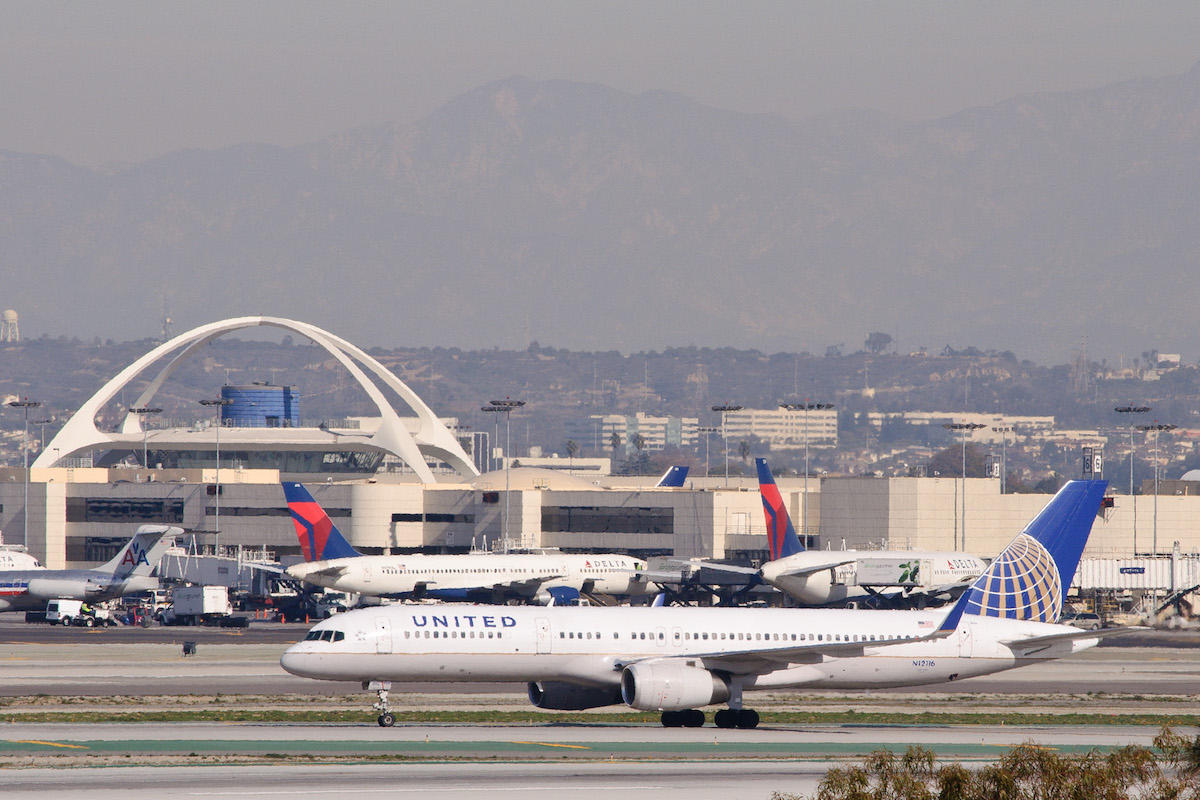Photo credit: United and Delta Boeing 757s at LAX. Flickr / Scarlet Sappho
Boeing’s decision to kill its New Mid-Market Airplane, or NMA, concept two years ago could drastically upset the global duopoly for large commercial aircraft.
At least that’s the view of Richard Aboulafia, a long-time aerospace analyst and now managing director at AeroDynamic Advisory, in a presentation at the U.S. National Transportation Research Board Annual Meeting in Washington, D.C., on Tuesday. Airbus has already captured more than 83 percent of the 3,570 orders for large narrowbodies — including the A321neo and its variants, and the Boeing 737 Max 9 and 10 — according to order data from the end of September. And that gap only widened in the months since with orders from marquee customers KLM and Qantas for the European planemaker.
“We’re looking at one of those pivotal moments in aviation that, if Boeing doesn’t respond, they’re going to lose 10, 15 points of market share,” said Aboulafia. He outlined the possibility of a future 70-30 market split in favor of Airbus, citing the follow on orders, for example for smaller A220 or A320neo family jets, that airlines could place with the planemaker to complement their purchases of A321s.
For its part, Boeing officials said the planemaker views the 737 Max as a full family and not individual types, like the 737-8 or -10. By this measure, sales were brisk last year with major orders from Southwest Airlines, United Airlines, and, earlier in January, from new customer Allegiant Air. And asked about the 737-10s inability to operate longer-range missions, for example across the North Atlantic, they indicated that the jet can operate 99 percent of single-aisle missions.
Boeing’s problem is not new. The U.S. manufacturer has been playing catch up with Airbus in the narrowbody space since its European competitor launched the re-engined A320neo family in 2010. That move forced Boeing to delay a new clean-sheet 150-200 seat aircraft and instead re-engine the 737. The resulting Max was then grounded for nearly two years after two fatal crashes attributed to the flight control system. In addition, the largest Max variant — the 737-10 — has proven a poor alternative to the A321neo in terms of range and payload. The NMA, which Boeing first unveiled concepts for in 2017, would have filled the mid-market gap for a 200-250 seat aircraft but was essentially cancelled in 2020 amid the airframer’s struggles with the Max.
That cancellation has pushed nearly every mid-market customer into the hands of Airbus. A shift that the coronavirus pandemic, which all but shut down global air travel in March 2020, only accelerated as airlines realized “the virtues of point-to-point flying,” as Aboulafia put it. The A321XLR, the most capable variant of the A321neo family with a range of just over 5,400 miles, has risen in popularity among airlines looking for a plane with narrowbody economics and widebody capabilities.
Asked if Boeing still has time to respond to Airbus’ sweep given any new aircraft would likely not enter service until the end of the decade, Aboulafia said the planemaker does have time — but needs to act fast. He added that a number of airlines have indicated that they want a competitor in the space and are hesitant to give Airbus too much pricing power.
“We are focused on being a dual-source user of airplanes,” Delta Air Lines President Glen Hauenstein told pilots in November. The Atlanta-based carrier, which along with United Airlines is one the largest remaining Boeing 757 and 767 operators, is in regular talks with Boeing, including over a potential mid-market aircraft that he described at the time as “encouraging.”
But finding customers for a cleansheet mid-market aircraft is just one of many challenges Boeing faces. Broadly, the aiframer is struggling to resume 787 deliveries after they were halted due to quality concerns raised by the U.S. Federal Aviation Administration, the 777X is at least three years late due to a myriad of issues, and it is awaiting FAA certification for both the 737-7 and -10 that combined have hundreds of orders. Specific to the mid-market, Air Lease Corp. Executive Chairman Steven Udvar-Hazy noted in November that a new plane will need engines that provide at least a double-digit improvement in fuel burn and other efficiencies over current technology. And it is not currently clear how those savings will be achieved, whether from improvements to the existing geared-turbofan technology or from hybrid- or hydrogen-electric technology.
“How do you commit $15, 20 billion between the engine and airframe development not knowing where the industry’s headed?” he said.
Speaking of the development of electric aircraft, there is little consensus on what’s coming. Aboulafia called the entire segment, and particularly in-vogue electric vertical takeoff and landing (eVTOL) aircraft, “destructive greenwashing” citing the limited energy density and reliability of contemporary batteries. Specific to eVTOLs, he said their limited range means they compete with ground transport, which is “de-carbonising at a faster pace” than aviation, rather than contemporary aircraft.
“It’s more likely the airport itself becomes electric, and aircraft are focused on sustainable fuels and other sorts of engines,” said Campbell-Hill Aviation Group President and CEO Kevin Healy, who agreed generally with some of Aboulafia’s critiques. TJ Schulz, president of Airport Consultants Council, added that he expects airports to electrify — and reduce their carbon footprints — far faster than aircraft do over the next 10 to 15 years.
And Jens Hennig, vice president of operations at the General Aviation Manufacturers Association (GAMA), is optimistic for the future of electric aircraft but noted that it really all comes down to engines.
“Every evolution revolution in aviation has been around the powerplant,” he said.
Updated with comments from Boeing.
Special Offer: Choose From Quarterly or Annual Subscription Plans
{{monthly_count}} of {{monthly_limit}} free stories left to read
SubscribeAlready a member? Sign in here
You Need an Airline Weekly Susbcription to Read This Story
Your story count resets on {{monthly_reset}}
Already a member? Sign in here
